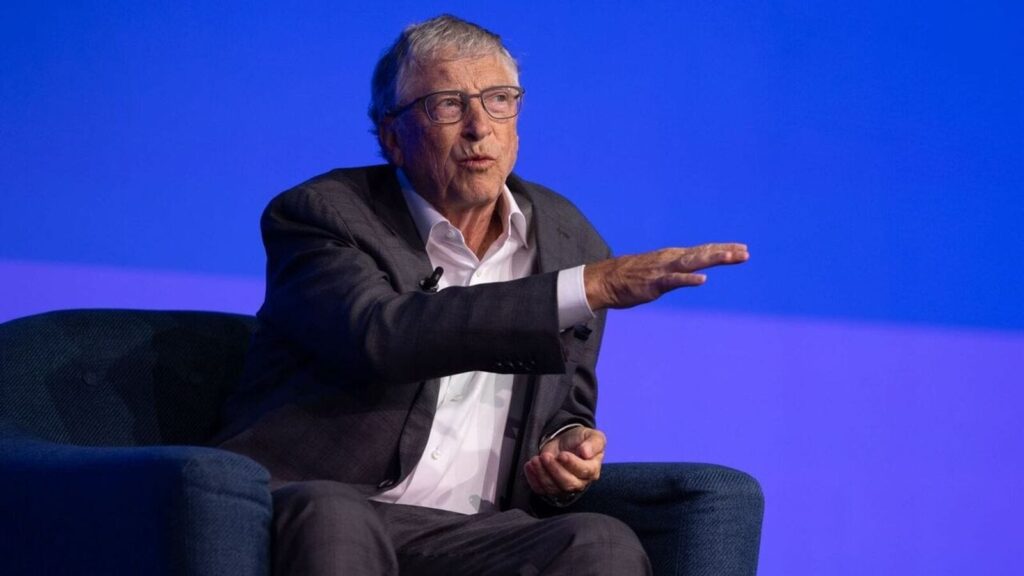This is true for nearly every issue the Bill & Melinda Gates Foundation works on, from poverty reduction to primary-school enrolment. But nowhere is the contrast more stark or tragic than in health.
Between 2000 and 2020 the world witnessed a global health boom. Child mortality fell by 50%. In 2000 more than 10m children died every year, and now that number is fewer than 5m. The prevalence of the world’s deadliest infectious diseases fell by half, too. Best of all, the progress was happening in regions where the disease burden had been the highest. Sub-Saharan Africa and South Asia saw the most improvement.
Then covid-19 hit, and progress came to a screeching halt.
Today, the world is contending with more challenges than at any point in my adult life: inflation, debt, new wars. It is also contending with the worst child-health crisis: malnutrition. Unfortunately, aid isn’t keeping pace with these needs, particularly in the places that need it the most.
When a child dies, half the time the underlying cause is malnutrition. Climate change is making the situation worse. Between 2024 and 2050, some 40m additional children will be stunted and 28m will suffer wasting as a result of climate change, according to new data from the Institute for Health Metrics and Evaluation. These conditions, the most acute forms of malnutrition, mean children don’t grow mentally or physically to their full potential.
The health and economic impacts are catastrophic. A child who has suffered severe malnutrition before the age of three will complete five fewer years of schooling than well-nourished children, and studies show that people who went hungry as children earn 10% less over their lifetimes and are 33% less likely to escape poverty.
We must invest in global health to protect children from hunger’s worst effects, mitigate the impacts of climate change and spur economic growth. And looking to the past can provide inspiration for how to rekindle progress.
The global health boom had many causes. A new generation of political leaders embraced humanitarianism. Hundreds of thousands of health workers fanned out across the globe, bringing the latest medicines to places that doctors had rarely visited. But one often overlooked factor was a small—yet crucial—increase in funding.
Starting in 2000, the world’s wealthiest countries began steadily increasing their funding to supplement low-income countries as they increased their own investments in health. During the century’s first 20 years OECD countries steadily increased foreign aid from an average of 0.22% of their gross national income to 0.33%—with the most generous countries giving around 1%. In 2020 low-income countries received an average of $10.47 per person. It doesn’t sound like much, but that $10.47 made a remarkable difference. It fuelled the work of organisations like Gavi, the Vaccine Alliance and the Global Fund to Fight AIDS, Tuberculosis and Malaria, which gave poorer countries access to life-saving vaccines, drugs and other medical breakthroughs.
The impact of this generosity was stunning. Yet the work is unfinished. Today, more than half of all child deaths still occur in sub-Saharan Africa. Since 2010 the percentage of the world’s poor living in the region has increased by more than 20 points, to nearly 60%. Despite this, during the same period, the share of total foreign aid going to Africa has dropped from nearly 40% to only 25%—the lowest percentage in 20 years. Fewer resources mean more children will die of preventable causes.
The global health boom is over. But for how long? That’s the question I have been wrestling with for the past five years. Will we look back on this period as the end of a golden era? Or is it just a brief intermission before another boom begins?
I’m still an optimist. I think we can give global health a second act—even in a world where competing challenges require governments to stretch their budgets. To do this, we’ll need a two-pronged approach.
First, the world has to recommit itself to the work that drove the progress in the early 2000s, especially investments in crucial vaccines and medicines. They’re still saving millions of lives each year.
We also need to look forward. The research-and-development pipeline is brimming with powerful—and surprisingly cost-effective—breakthroughs. We need to put these to work fighting the most pervasive health crises. And it starts with good nutrition.
One of the few failures of the global health boom was that we didn’t understand the importance of nutrition. But over the past 15 years doctors have started to uncover the ways the stomach influences every aspect of human health. If we solve malnutrition, we make it easier to solve many other problems. We solve extreme poverty. Vaccines are more effective. And deadly diseases like malaria and pneumonia become far less fatal.
This knowledge is now being turned into surprisingly cost-efficient innovations, such as super-fortified bouillon and more effective prenatal vitamins. The impact of scaling up these innovations would be amazing. In Nigeria, modelling shows that fortifying bouillon cubes wouldn’t just prevent anaemia; it would also avert more than 11,000 deaths from birth defects of the central nervous system, known as neural tube defects. And if low- and middle-income countries adopted the most complete form of prenatal vitamins, called Multiple Micronutrient Supplements, almost half a million lives could be saved by 2040.
The early global health boom is over. “But for how long?” is a question that’s still in humanity’s control to determine. I believe we can start a second global health boom by getting children the nutrients they need to thrive.
Bill Gates is the co-founder of Microsoft and co-chair of the Bill & Melinda Gates Foundation. A longer version of this article appears in the foundation’s for 2024.




